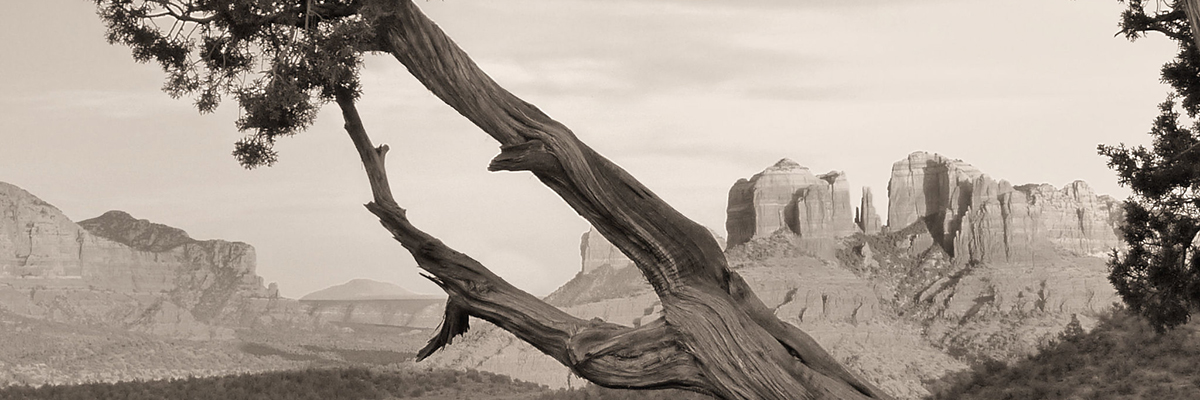
History of Los Lagos Sedona Location
The history of Red Rock Loop Road is full of colorful characters, marvelous anecdotes, and flavorful stories that have shaped one of Sedona’s most iconic regions. A retelling of that history revolves around indigenous people, European immigrants, prospectors, farmers, gamblers, and restaurateurs. The geography is spectacular, and it is easy to see why people have been drawn to this area. Red Rock Loop Road has been a home to many and exists today as monument to the brave and intrepid spirits that some say still inhabit the area.
Limestone and sandstone dominate the natural makeup of the Red Rock region and the area has been a depository for sediment and silt for many millennia. When an ancient range of the Rocky Mountains (pre-dating the current Rocky Mountains) eroded, the Hermit Formation was formed. That Hermit Formation is the soft and powdery top soil that most visitors to Sedona trod while visiting. While standing on the soft Hermit Formation a simple glance up reveals the striated limestone and sedimentary rock that has been carved by wind and water and provides the most unique geological formation in the Southwest.
Around 1300 the Yavapai people were the dominant force in the region and were later joined by the Apache. Anglo settlers first arrived in the 1870’s amidst the fervor of the Homestead Act. The region specifically recognized as Red Rock Loop owes much of it’s legacy to the Schuerman family and a mountain still bears that family name. Henry and Dorette Schuerman had settled nicely in Prescott when an acquaintance named Tom Carroll deeded some land to the Schuermans to cover a debt. Tom Carrol is still memorialized in the names of Carroll Wash and Carroll Canyon. The Schuermans ventured to a region of great beauty but no schools, shops, or churches. The Schuermans started a meager farm, vineyard, and orchard and as they grew, found a ready market for their good in the boom town of Jerome. This proximity to their Red Rock farm helped the Schuermans prosper and become the progenitors of settlement in the Red Rock Loop area.
While the names associated with the Schuermans, like Dumas, Loy, and Frye, have all made an impression on the early days of Sedona, it would be unfair to ignore the more modern history. The Crescent Moon Recreation Area, formerly known as Crescent Moon Ranch is a favorite of visitors. The Ranch was settled in 1876 and passed through many hands in its lifetime. It’s most influential owner, however, was Lois Kellogg who purchased the Ranch from the Dumas family. She is responsible for renaming the Ranch to Crescent Moon and began its transformation from a working Ranch property to a place of intense beauty and spiritual growth. With a life-long interest in Eastern religions, Lois built a building on the property to support an ashram and the spiritual nature of the property never diminished. In 1980 the Federal Government purchased the Ranch where it lay vacant for 14 years while a decision was made regarding its use. To protect the riparian aspect of the region, it was decided that a day-use only park was the best option and it remains that way today.
Ms. Kellogg didn’t restrict her interest to the more conventional religions and eventually joined one of the more eccentric groups of religious practitioners to find a home on Red Rock Loop. The Eckankar were the first in a long line of religious splinter groups that found purchase in the region. Others, like the Aquarian Concepts Community and the Course in Miracles have used the region as a source of inspiration and habitation. These groups are obviously drawn to the incredible scenic beauty, but it should be noted that there has always been a sense of mysticism surrounding the Red Rock Loop.
This rich and varied culture has deep historical roots and is a wonderful diversion while visiting Sedona. It is simple to immerse yourself in the people, places, and stories that chronical The Red Rock Loop.